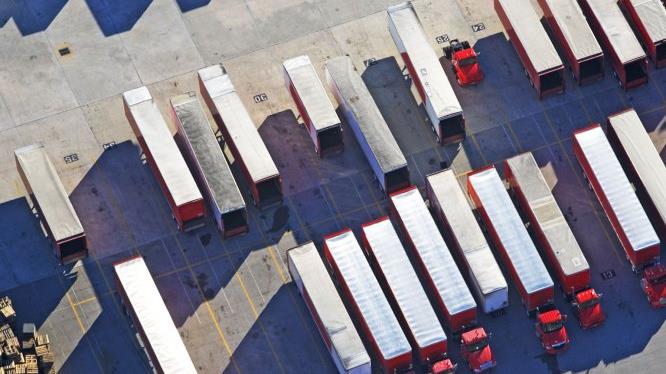In recent years, companies have adopted fleet telematics technologies at an accelerating rate. Around 15 percent of vehicles now come with telematics installed as standard, and there are estimated to be 100 million telematics units in operation around the world. The global market for fleet telematics hardware, software, and services is forecast to grow at around 23 percent per annum for the next six years, becoming a $75 billion industry by 2025.
Stay current on your favorite topics
In part, that growth is due to changing regulatory requirements. In the U.S., for example, operators of many categories of vehicles are now required to install electronic logging devices (ELDs) that record driver hours of service and rest periods. In January, before the April 1 full-enforcement deadline for ELDs, about a third of U.S. fleets were still using paper logs. They must all now have electronic devices to record the data.
Telematic devices—which monitor and communicate location, fuel consumption, driver behavior, and other data—promise a range of additional benefits. Many organizations hope these technologies will help them improve the efficiency and effectiveness of their fleet operations and maximize the productivity of their drivers.
Often, however, companies find that despite their investment in telematics devices and platforms, the expected performance improvements don’t emerge. While it’s easy to blame the technology, in our experience many telematics programs are let down by disconnects within the organization.
Would you like to learn more about our Operations Practice?
Six steps to success
We’ve identified six pre-conditions that characterize the most successful projects.
The right skills
Telematics data tells you what your vehicles—and drivers—are doing, not how to optimize your business. Companies therefore need people who can interpret the data, identify opportunities for performance improvement, and make the necessary decisions to capture those opportunities. Without those skills in-house, companies may become overreliant on their technology vendors for insight, or they may struggle to integrate telematics into their day-to-day operations.
Dedicated capacity
Fleet operations are inherently dynamic. While retrospective analysis of historical data can provide useful insights, much of the value of a telematics system depends on an organization’s ability to identify and respond to issues as they emerge. For example, a truck breaks down or customer demand increases. That requires people with appropriate skills, capacity, and accountability. As a best practice, a company should have at least one manager and one analyst dedicated to its fleet. Larger fleets may require significantly more.
The right metrics
Organizations need to agree on the purpose of their fleet telematics program, and align on the metrics they want to track and improve. Fleet operations may involve trade-offs between metrics, and companies need to consider how these will be managed to avoid conflict between stakeholders. For example, the fleet-operations function may feel pressure to maximize utilization while the marketing organization focuses on service-level compliance.
Companies also need to understand the actions available to them to drive performance improvement. A telematics system may be able to highlight the 20 percent of drivers with the lowest productivity, for example, but the company must decide what it will do with this information.
Organizational alignment
Organizations need to decide how decisions regarding their fleet will be made. Since fleet operations usually affect many parts of a business, the best practice is to establish a fleet steering committee staffed by representatives from operations, sales, marketing, analytics, HR, and other relevant functions. This committee then meets on regular basis to review fleet performance, discuss new insights emerging from telematics data, and agree on any required actions.
Relationship with vendor
Companies need a collaborative relationship with their telematics equipment suppliers. During the early phases of a project, support from the vendor helps the organization compile, access, and interpret the data generated by the telematics system. Vendor experience can help companies analyze and summarize data, and derive insights from those summaries. Where responsibility for data storage is taken by the vendor, companies should take care to ensure that they have both the right and the technical capability to access the raw data, to prevent a valuable asset becoming locked into the vendor’s platform.
CIO priority
Fleet-telematics implementations require appropriate IT infrastructure and systems support. This means that, like other major IT programs, they must be prioritized by the CIO. Without this high-level support, fleet data can be seen as a backwater, difficult to access and underutilized. With the right attention, however, organizations can find ways to integrate fleet data with other data sources, improving decision-making, enabling the provision of new services, and boosting value capture.

Ask an Expert: Capturing fleet impact from telematics
From data to impact
With these six pre-conditions in place, companies have used data from telematics systems to unlock significant cost reductions and fleet performance improvements.
A truckload carrier used its telematics program as the basis of a comprehensive effort to optimize total cost of ownership across its geographically dispersed fleet comprising thousands of tractors and trailers. The company built a financial model that combined data on maintenance costs, fuel consumption, depreciation and other per-mile costs for its entire tractor fleet. Within four weeks the new model, which unlocked previously inaccessible asset-level cost data, revealed that maintenance costs for older vehicles in the fleet were much higher than the company had expected. That insight drove a change in policy, with vehicles retired earlier to cut the average age of the fleet in half. The reduction in operating and maintenance costs that resulted from this change more than compensated for the increased capital expenditure required to achieve it.
An environmental-services company used telematics to reduce maintenance costs across its fleet of more than 10,000 vehicles. Analysis of vehicle operational data showed that frequent exhaust-system failures were a significant driver of maintenance costs. Moreover, when the company looked at the data from vehicles that suffered such failures, it found that drivers were ignoring in-cab warnings asking them to adjust their driving to allow diesel-particulate filters (DPFs) to regenerate. When regeneration cycles didn’t complete, these filters became clogged and vehicles had to be taken out of service for repair.
Linking engine telemetry to error codes allowed the company’s fleet leaders to tell when a driver’s noncompliance with the regeneration protocol contributed to DPF repair or replacement. Site-level leadership could then reward drivers who reduced the frequency of DPF issues and coach those whose performance remained unchanged or worsened.
Telematics technology has the potential to improve numerous aspects of fleet operations, from safety and reliability to fuel consumption and schedule adherence. The necessary hardware is now readily available: its installation in many fleets is a legal requirement. Transforming vehicle and driver data into business value requires companies to think beyond the technology, however. It calls for new capabilities, organizational changes, and sustained management focus.


